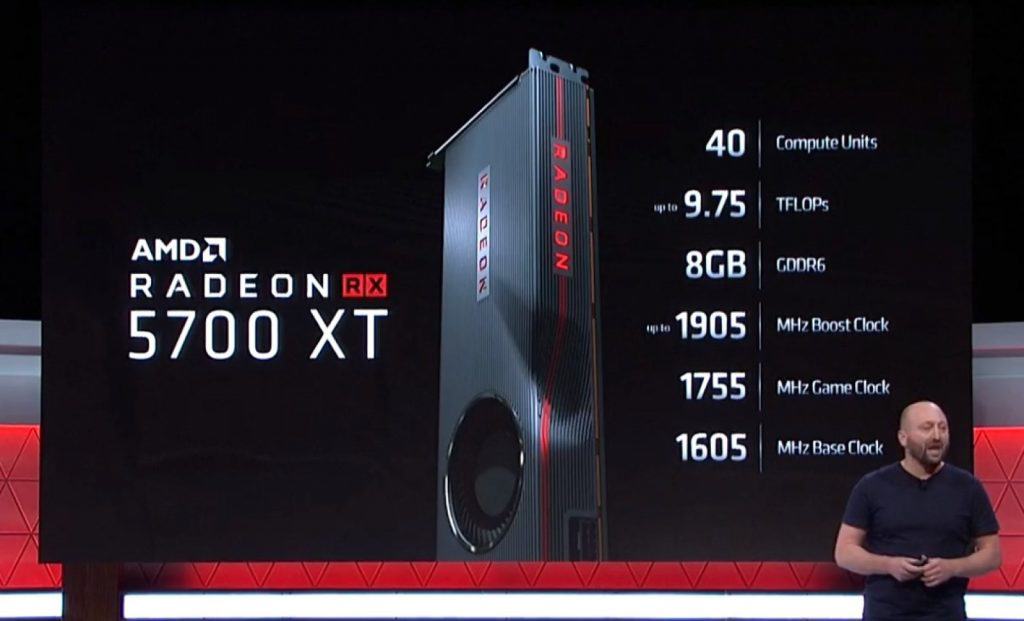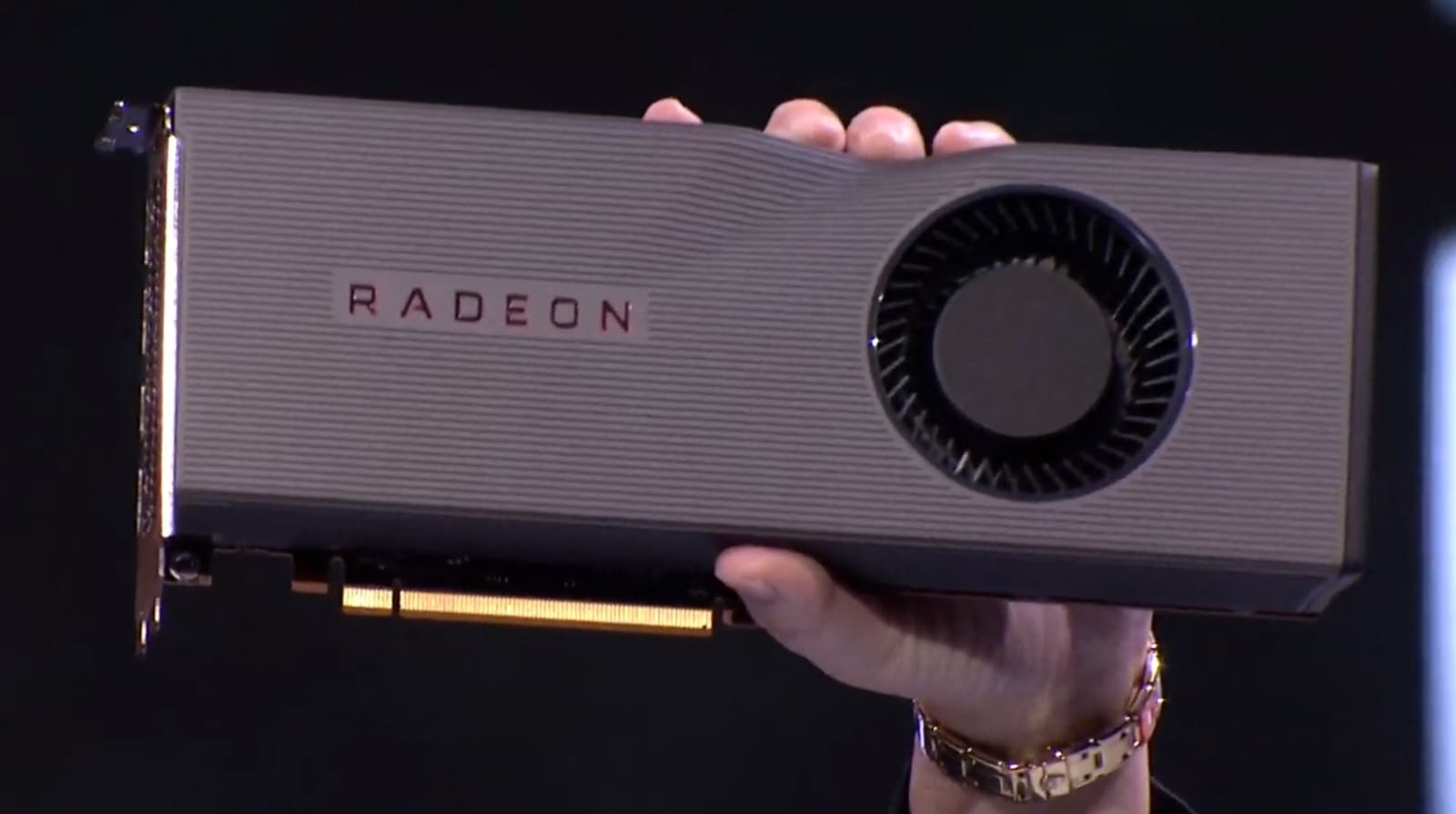
It’s the company’s first next-generation “RDNA” video card.
After unveiling its first 7-nanometer “Navi” GPUs a few weeks ago at Computex, the Radeon RX 5000 series, AMD finally gave us more details at E3. Its first cards from the new “RDNA” family will be the $449 Radeon RX 5700 XT, which will take on NVIDIA’s RTX 2070, and the $379 RX 5700, which competes with the NVIDIA RTX 2060. AMD says the more powerful 5700 XT will feature 40 compute units, boost speeds upwards of 1.9GHz, and up to 9.75 teraflops. In an on-stage gameplay demo, it outperformed the RTX 2070 by around 20 FPS in 1440p. The 5700, meanwhile, has 36 compute units and speeds up to 1.7GHz. Both cards will be available on July 7th.

To be clear, AMD is only target mid-range performance with these GPUs. Its high-end offering is still the Radeon VII, a 7nm card built on its older architecture. But the new cards are still significant for the company, since they’re the start of an entirely new generation of graphics technology. As a surprise, AMD also unveiled a $499 50th anniversary edition of the 5700XT, which will feature boost speeds up to 1.98GHz, as well as a unique gold and black shroud.
New features in the Radeon 5700 cards include FidelityFX, an open source toolkit that can improve visual quality, like making the roads in a racing game sharper. Radeon Image Sharpening will offer a similar visual upgrade for games that don’t support FidelityFX, and AMD says both features won’t impact performance. Esports players will also appreciate Radeon Anti-Lag, which helps to reduce lag between your GPU and monitor. Typically, that’s something players handle by trying to drive their FPS performance as high as possible. The feature managed to drop around 15ms worth of lag compared to NVIDIA’s RTX 2070.
E3 is a bit of an odd venue for the company, but it makes sense since its hardware powers both Microsoft’s next-generation Xbox, Project Scarlett, as well as Sony’s unnamed new PlayStation. Surprisingly, AMD still isn’t saying anything about real-time ray tracing, a key feature in NVIDIA’s RTX GPUs, even though both of those consoles will include it. Perhaps AMD is just biding its time for developers to take advantage of its new hardware. At Computex, the company made it clear it was working on ray tracing technology of its own.


